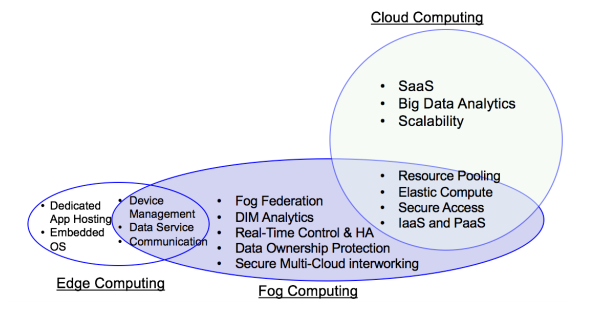Cloud computing future is not foggy, but more and more companies are now exploring Internet of Things so there are other types like fog, edge and mist computing that are catching up.
Cloud, fog, and mist computing can be seen as application of fluid computing, now that is another term for you to remember.
How do you decide what (mist, edge, fog ) to use?
Which place is best for data processing?
All depend on how quickly a decision is needed?
Put The Brain Where Limbs Are
If your data is generated in some remote field and decision need be made quick — sending data to cloud for processing won’t work
1.Ideally time sensitive decisions should be made closer to the system that is producing and acting on the data; so you can move some compute and analytics closer to the data — and you can save some cost on network and storage too.
2.Data that can wait minutes for action is passed along to the aggregation node for analysis and action
3.Data that is less time sensitive is sent to the cloud for historical analysis, analytics, and long-term storage
...
Difference Between Cloud, Fog, Edge and Mist Computing

...
IoT Architecture Features and Overlap Areas

Edge computing is also sometimes called “mist” computing. If clouds exist in the sky, and fog sits near the ground, then mist is what actually sits on the ground. Thus, the concept of mist is to extend fog to the furthest point possible, right into the IoT endpoint device itself